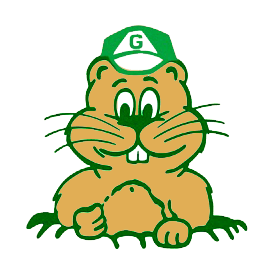Kindergarten – Curriculum Guide
Parent To-Do
Tote Bags
Gomes Gopher Tote Bags will be available to purchase on the first day of school or from your child's teacher during the month of September. This is an optional purchase. We recommend, however, that your child brings a tote bag rather than a backpack to school.
Snack Time
All kindergartners will have time for eating a snack at school. Please provide a small snack for your child. We encourage you to send healthy food that your child can consume in 5 minutes or so. No candy, please. Suggestions for appropriate snacks include fruit, applesauce, carrot sticks, cheese and crackers, half a sandwich, and rice cakes.
Appropriate Dress
Children like to play and we encourage you to dress your child accordingly. We strongly suggest comfortable shoes (no jellies) and clothing appropriate for active movement. No toys or distracting jewelry (such as watches that play music) are allowed at school. Please tie shoes in double knots.
Classroom Volunteers
We love having you parents in the classroom. It is fun for us and it is fun for your child! We will be discussing our Volunteer Wish List at Back to School Night. We are looking forward to working with you.
What Do We Teach in Kindergarten?
By the end of Kindergarten, students are expected to show mastery in the following areas of language arts:
In the area of Mathematics, they are expected to master the following:
Students who do not achieve mastery in almost all of the objectives will be referred to summer school remediation.
GATE Information
In Kindergarten, we endeavor to provide many open-ended activities that allow the advanced student to work at a higher level of thinking. We facilitate classroom discussions that give the advanced student a chance to question and formulate ideas while expanding vocabulary that he or she would not necessarily use in daily conversation. We create opportunities for students to use manipulatives to express a mathematical idea, giving the advanced student a chance to build a deeper understanding. We model positive social interaction and encourage the advanced learner to be a diplomatic leader in small group activities.
Writing Assessment
Given a prompt not previously used before, a student writes related sentences independently. This is done late in the kindergarten school year.
The resulting score is a 1, 2, or 3, described below. A score of 2 meets state and district kindergarten standards.
Score
Characteristics of assessments earning the score
3
- Writes two or three non-repetitive sentences
- Uses correct punctuation
- Uses appropriate capitalization
- Uses easy to read punctuation
- Varies sentence structure
- Uses descriptive words or phrases
- Uses phonetic spelling and standard spelling for simple words
2
- Writes a minimum of one sentence
- Uses legible penmanship
- Uses left-right/up-down progression
- Uses appropriate spacing between words
- Is understood by the reader
- Uses sound symbol relationships (phonetic spelling)
- Spells 3-letter short vowel words and applies basic phonics knowledge
1
- Conveys little or no message to the reader
- Uses scribble (scriggle) writing
- Strings letters together
- Writes initial consonants
- Makes no attempt to write
- Does not relate writing to picture prompt
- Copies isolated word from board
- Put your child's first and last name on all articles of clothing that might be left at school, such as sweaters, coats, hats, both gloves, etc.
- Emphasize to your child that toys must stay at home.
- Help your child practice tying (especially shoes), zipping, buttoning, and snapping.
- Work with your child on writing his/her name using the alphabet guide of DNealian printing you will receive at Back to School Night.
- Please promptly complete and return the information packet sent home on the first day of school.
- Know about letters, words, and sounds. Apply this knowledge to read simple sentences.
- Identify the basic facts and ideas in what has been read, heard, or viewed. Use comprehension strategies.
- Write words and brief sentences that are legible.
- Write and speak with a command of English conventions.
- Listen and respond to oral communication. Speak in clear and coherent sentences.
- Colors, shapes, and sizes.
- Classification, position, and pattern.
- Numbers 0 - 10 (quantities).
- Number writing and recording data (graphs).
- Addition and Subtraction to 10.
- Time, money, measurements and fractions.
- Greater numbers.
